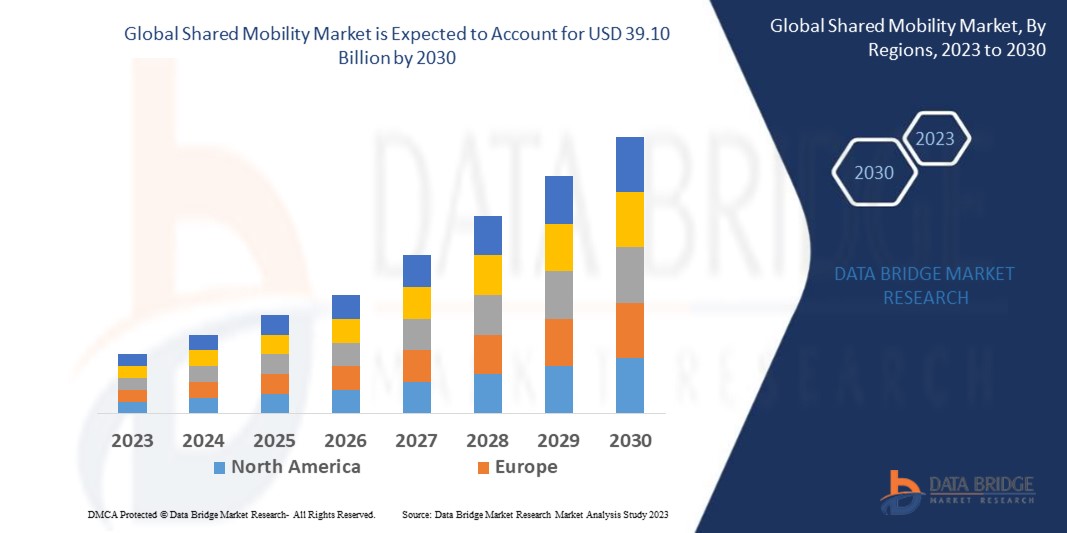Introduction
We define shared mobility generally as the sharing of transportation resources and services among users, either simultaneously or sequentially. Public transportation, micro mobility (sharing bikes and scooters), automobile-based modes (carsharing, rides on demand, and micro transit), and commute-based or ridesharing modes are all included (carpooling and vanpooling).
What does shared mobility mean?
A travelling service called “Shared Mobility” allows users to share transportation services with other users. With this service, commercial vehicle owners loan their cars to a company, which then makes them available for ride-sharing, mobility services, and employment. The cost of these cars varies with the length and distance of the trip. Bike, scooter, limo, taxi, automobile, ridesharing, and many other shared vehicles are all examples of shared mobility.
Covid-19 scenario
- Because of changes in worldwide travel habits, the Covid-19 epidemic had a detrimental effect on the expansion of the shared mobility business. During the epidemic, individuals were substantially less mobile.
- The epidemic caused a change in commuting priorities. Commuters choose secure, hygienic modes of transportation over shared mobility options like ride sharing.
- The use of ride-hailing services has decreased as a result of policies including reduced commute, social isolation, and fear of traffic.
- Nevertheless, due to the expansion of e-commerce and last mile delivery, alternative forms of shared mobility, such as micro mobility services, have seen an increase in demand.
- Also, commuters now use micro mobility vehicles for daily transportation, including e-bikes, bicycles with electric pedal assistance, scooters, and others. Throughout the forecast period, this is predicted to accelerate the expansion of the shared mobility market.
Market growth in shared mobility market
- According to Data Bridge Market Research, the shared mobility market is predicted to grow at a CAGR of 31.18% from 2022 to 2030, reaching USD 39.10 billion, up from USD 4.46 billion in that year.
- The market report created by the Data Bridge Market Research team includes in-depth expert analysis, import/export analysis, pricing analysis, production consumption analysis, and pestle analysis in addition to market insights like market value, growth rate, market segments, geographical coverage, market players, and market scenario.
- In practically every country, private automobiles are the most widely used form of transportation. Worldwide, 67% of poll participants claimed to usually drive their own cars, while 38% claimed to frequently utilise public transit. About that, it has been observed that hailing services, particularly e-hailing, accounted for the highest proportion, between $120 billion and $130 billion, which is more than 90% of the overall market.
- However, less than 10% of this sector is made up of vehicle sharing and peer-to-peer services, which highlights how convenient e-hailing is. Compared to investments in e-hailing, the car-sharing business has received just a paltry $3 billion in funding.
Shared Mobility Market Trends
The development of smart mobility, which is a novel approach to figuring out how to commute in a safe, efficient, and clean mode, it is now possible to essentially figure out a means of Zero-emission, Zero-ownership, and Zero-accidents. Additionally, the industry has expanded greatly over the past 20 years and will do so in the years to come as a result of the continuous advancement in the application of AI.
Moreover, during the past several decades, the public transportation system has seen tremendous improvements in terms of travel time, contactless payment, and general efficiency. A rise in market opportunities has led to several recent breakthroughs in technological start-ups. Players in the market are developing novel motorcycle or taxi sharing tactics more often. The tracking monitor of various public vehicles at a bus stop demonstrates how the public sector is becoming even smarter by concentrating on the routes of public buses and caring about schedules. As they perceive the future potential of the market, investors have recently begun to spend heavily on such an idea.
For more information about shared mobility market
https://www.databridgemarketresearch.com/reports/global-shared-mobility-market
Shared Mobility Market Dynamics
-
Rising creation of new services and forms
Peer-to-peer automobile sharing, shared electric scooters, and other new services and modes have all been introduced. Its automated operations, tailored travel on demand, possible integration, and environmentally benign nature have all been cited as reasons for this rise. The market for shared mobility is anticipated to develop as a result of linked automobiles and smartphones being more widely used.
-
Consumers are using ridesharing more frequently
Several businesses have started developing smartphone applications to aid with non-ownership transportation. The passenger may simply reserve their trip in this module based on their preferences, such as the time, route, and vehicle type for the specific time period. Ridesharing is expected to grow significantly during the projection period, which may be attributed to customers’ widespread acceptance of this stylish and economical means of transportation. Hence, customer acceptance of ridesharing is anticipated to fuel industry expansion.
About data bridge market research
Data Bridge Market Research offers a broad range of market research services. Global corporations and medium-sized organisations may benefit from the unrivalled quality of “Market Research Reports” and “Business Intelligence Solutions” offered by Data Bridge Market Research. In order to help its clients make smart business decisions and experience sustained success in their particular market segments, DBMR focuses on offering business insights and advising.
A pioneer in cutting-edge formative research is Data Bridge Market Research. We take satisfaction in providing data and analysis to both new and current customers that are appropriate for their objectives. The report may be altered to incorporate refurbished market and product base analysis, clinical trial outcomes data, literature research, and pricing trend analysis of target brands’ prices in new countries (ask for a list of countries). Technology-based analysis to market portfolio strategies may be used to assess market analysis of target rivals. In the structure and data type you choose, we may include as many rivals as you need.
